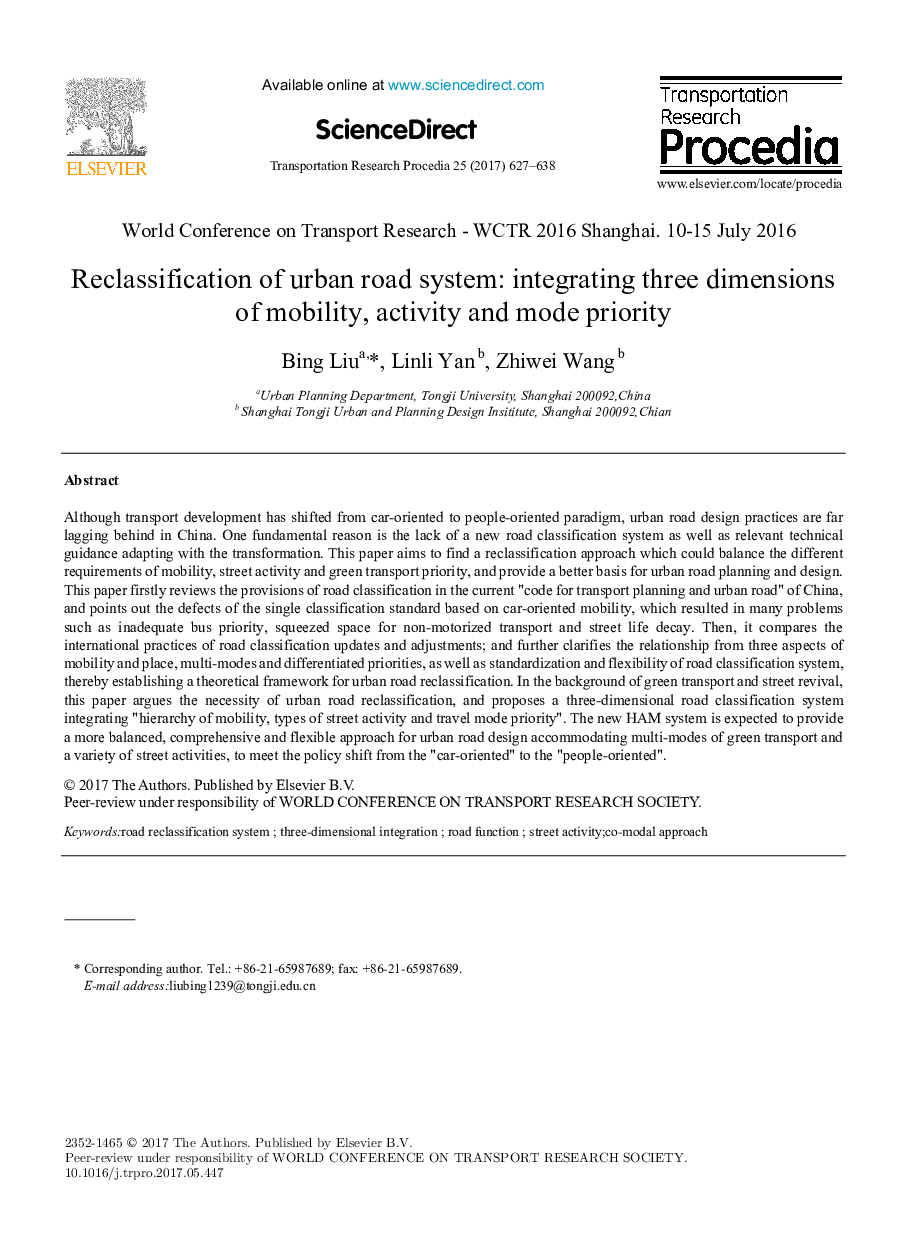| Article ID | Journal | Published Year | Pages | File Type |
|---|---|---|---|---|
| 5125192 | Transportation Research Procedia | 2017 | 12 Pages |
Although transport development has shifted from car-oriented to people-oriented paradigm, urban road design practices are far lagging behind in China. One fundamental reason is the lack of a new road classification system as well as relevant technical guidance adapting with the transformation. This paper aims to find a reclassification approach which could balance the different requirements of mobility, street activity and green transport priority, and provide a better basis for urban road planning and design. This paper firstly reviews the provisions of road classification in the current "code for transport planning and urban road" of China, and points out the defects of the single classification standard based on car-oriented mobility, which resulted in many problems such as inadequate bus priority, squeezed space for non-motorized transport and street life decay. Then, it compares the international practices of road classification updates and adjustments; and further clarifies the relationship from three aspects of mobility and place, multi-modes and differentiated priorities, as well as standardization and flexibility of road classification system, thereby establishing a theoretical framework for urban road reclassification. In the background of green transport and street revival, this paper argues the necessity of urban road reclassification, and proposes a three-dimensional road classification system integrating "hierarchy of mobility, types of street activity and travel mode priority". The new HAM system is expected to provide a more balanced, comprehensive and flexible approach for urban road design accommodating multi-modes of green transport and a variety of street activities, to meet the policy shift from the "car-oriented" to the "people-oriented".
